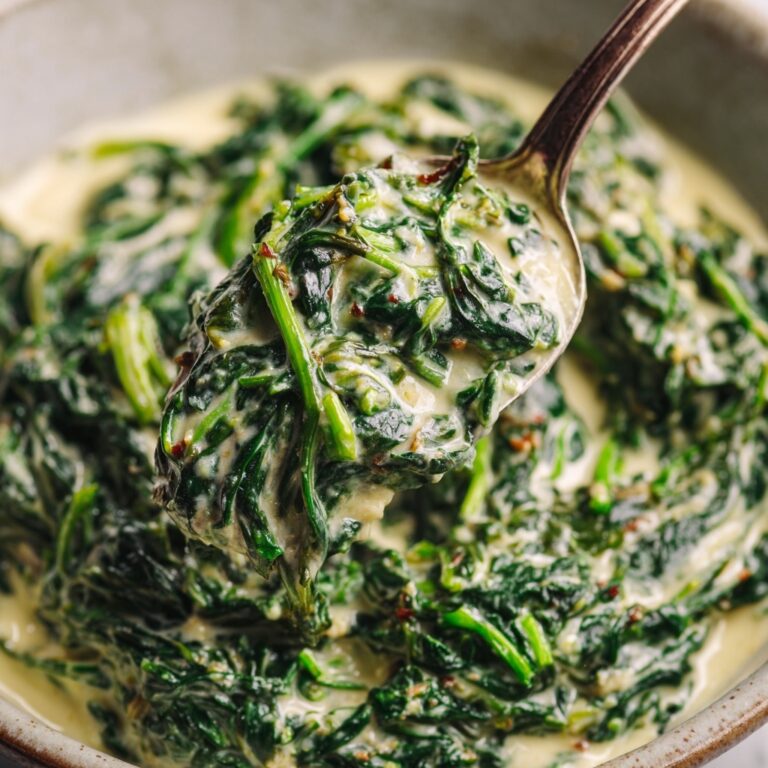Homemade Miso Soup with Tofu Recipe
Introduction
Homemade miso soup with tofu is a comforting and flavorful Japanese staple that you can easily make from scratch. This recipe walks you through making traditional dashi broth and blending it with soft tofu and miso for a warm, umami-rich soup. Perfect for a light meal or a soothing start to any dinner.

Ingredients
- 4 cups water
- 1 piece kombu (dried kelp), about ⅓ oz (10 g), 4 x 4 inches (10 x 10 cm)
- 1 cup katsuobushi (dried bonito flakes), loosely packed (about 3 cups for stronger flavor)
- 7 oz soft/silken tofu (kinugoshi dofu)
- 4 Tbsp miso (approximately 1 Tbsp or 18 g per cup of dashi)
- 1 Tbsp dried wakame seaweed
- 1 green onion/scallion
Instructions
- Step 1: Add 4 cups water and the kombu to a medium saucepan. If possible, soak the kombu for 30 minutes without washing it or removing the white substance, which holds umami flavor.
- Step 2: Slowly heat the water over medium-low heat until just before boiling (about 10 minutes). Remove the kombu before the water boils to prevent bitterness.
- Step 3: For non-vegetarian dashi, add the katsuobushi to the hot water and bring it to a boil again. Reduce heat and simmer for 30 seconds, then turn off the heat.
- Step 4: Let the bonito flakes sink for 10 minutes, then strain the broth through a fine mesh sieve. This is your Awase Dashi.
- Step 5: Chop the green onion into thin rounds.
- Step 6: Pour the dashi back into the saucepan and gently reheat without boiling, around 205°F (96°C), then turn off the heat.
- Step 7: Dissolve the miso in a ladle by slowly adding dashi and stirring with chopsticks or a miso muddler until fully dissolved.
- Step 8: Cut the tofu into ½-inch (1.3 cm) cubes and gently add to the miso soup after the miso is fully dissolved to avoid breaking the tofu.
- Step 9: Add the dried wakame and chopped green onions to the soup just before serving to preserve flavor and color. If concerned about salt, rehydrate wakame separately before adding.
- Step 10: Serve immediately, ideally on the right side of the table setting for authenticity.
Tips & Variations
- For a quicker version, use store-bought dashi packets or powder instead of making dashi from scratch.
- Vegetarians can skip the bonito flakes and use kombu and dried shiitake mushrooms to make vegan dashi.
- Avoid boiling miso soup after adding miso to preserve its aroma and flavor.
- Rehydrate dried wakame in plain water before adding if you want to reduce saltiness.
- If freezing miso soup, remove tofu first to prevent texture changes, and add miso only when reheating.
Storage
Miso soup is best enjoyed fresh, but you can refrigerate it for up to 2 days after cooling to room temperature (up to 4 hours). For longer storage, keep the soup without miso in the fridge or freezer. Add the miso only when serving. Frozen miso soup lasts up to 2 weeks, but remove tofu before freezing as the texture will change. When reheating, warm gently and avoid boiling.
How to Serve

Serve this delicious recipe with your favorite sides.
FAQs
Can I make miso soup without bonito flakes?
Yes, you can make a vegetarian or vegan version using kombu and dried shiitake mushrooms for dashi instead of bonito flakes.
Why shouldn’t I boil the miso soup after adding miso?
Boiling miso soup destroys the delicate flavors and nutrients in miso, causing it to lose its aroma and subtle taste. It’s best to warm the soup gently after adding miso.
Print
Homemade Miso Soup with Tofu Recipe
- Total Time: 25 minutes
- Yield: 4 servings 1x
- Diet: Vegetarian
Description
This Homemade Miso Soup with Tofu recipe guides you through making traditional Awase Dashi from scratch using kombu and katsuobushi to create a deeply umami-rich broth. Enhanced with soft silken tofu, dried wakame seaweed, and green onions, this classic Japanese soup is comforting, flavorful, and simple to prepare. Perfect for beginners and enthusiasts alike, the recipe also includes tips for vegetarian variations and proper storage to maintain freshness and flavor.
Ingredients
Dashi Ingredients
- 4 cups water
- 1 piece kombu (dried kelp) (⅓ oz, 10 g; approx. 4 x 4 inches or 10 x 10 cm)
- 1 cup katsuobushi (dried bonito flakes) (loosely packed 3 cups for stronger flavor)
Miso Soup Ingredients
- 7 oz soft/silken tofu (kinugoshi dofu)
- 4 Tbsp miso (use 1 Tbsp or 18 g per 1 cup/240 ml dashi)
- 1 Tbsp dried wakame seaweed
- 1 green onion/scallion
Instructions
- Gather Ingredients: Collect all listed ingredients, including kombu, katsuobushi, tofu, miso, dried wakame, and green onion.
- Prepare the Green Onion: Thinly slice the green onion into rounds for garnish.
- Make Kombu Dashi: In a medium saucepan, add 4 cups water and one kombu piece. Optionally soak kombu for 30 minutes. Slowly bring to a boil over medium-low heat (about 10 minutes) to extract umami. Just before boiling, remove kombu to avoid bitterness.
- Add Katsuobushi for Awase Dashi: If not making a vegan version, add 1 cup katsuobushi to the kombu dashi. Bring to a boil again, then reduce heat and simmer for 30 seconds. Turn off heat and let flakes settle for 10 minutes.
- Strain the Dashi: Use a fine-mesh sieve to strain the liquid, discarding solids. This yields about 4 cups Awase Dashi.
- Heat the Dashi: If using refrigerated dashi, warm it over medium heat to about 205°F (96°C) but do not boil.
- Dissolve Miso: Place miso in a ladle or small strainer. Slowly add hot dashi to it while stirring with chopsticks until fully dissolved. Adjust flavor if miso is too strong by adding more dashi or water.
- Add Tofu: Cut tofu into ½-inch (1.3 cm) cubes and gently add to the miso broth after miso is fully dissolved to prevent breaking.
- Add Wakame and Green Onion: Add 1 Tbsp dried wakame and sliced green onions to the pot just before serving to maintain freshness and color. Optionally, soak wakame separately to reduce salt content.
- Serve Immediately: Serve the miso soup hot but do not boil once miso is added, as boiling reduces flavor and aroma. Traditionally, place soup on the right side of the table setting.
- Store and Reheat: Consume soup promptly for best flavor. Cool to room temperature within 4 hours, refrigerate up to 2 days. For freezing, omit tofu; freeze miso soup up to 2 weeks and add miso fresh when reheating. Reheat gently without boiling to preserve nutrients and taste.
- Reuse Spent Ingredients: Save kombu and katsuobushi leftovers in airtight containers refrigerate for 1 week or freeze for up to a month. Use to make simmered kombu (Kombu Tsukudani) or homemade furikake (rice seasoning).
Notes
- Do not wash kombu or remove its white substance; it is full of umami flavor.
- Slowly heating kombu is essential to extract the full flavor without bitterness.
- Never boil miso soup after adding miso as it diminishes flavor and aroma.
- Use a miso muddler or fine-mesh strainer to help dissolve miso evenly.
- Add tofu after miso is dissolved to prevent the tofu from breaking apart.
- For reduced salt intake, soak wakame separately before adding to soup.
- You can store dashi broth refrigerated for up to 3–5 days or frozen up to 2 weeks.
- Freezing miso soup with tofu is not recommended because tofu texture changes upon thawing.
- Miso soup is best consumed fresh for optimal taste and aroma.
- Prep Time: 10 minutes
- Cook Time: 15 minutes
- Category: Soup
- Method: Stovetop
- Cuisine: Japanese
Keywords: miso soup, homemade miso soup, tofu miso soup, Japanese soup, dashi, awase dashi, kombu, katsuobushi, vegan dashi, soft tofu soup







